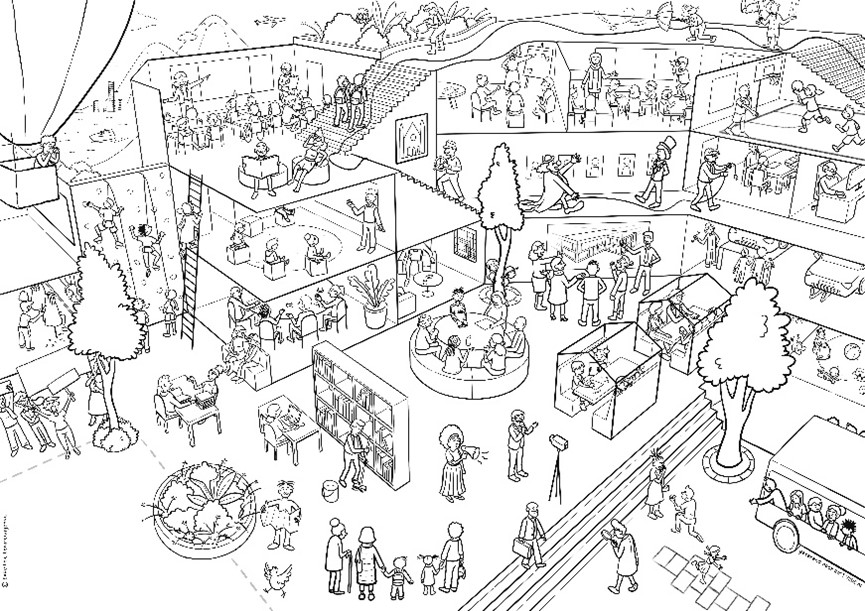Story-telling – a means and a method

Learning about inquiry
October 23, 2017
The teacher educator as an agent of (social) change
December 4, 2017It’s great in research when you discover something that you didn’t expect to find! As I embarked on my research for my doctorate I knew that I wanted to find out more about identity transformation for early career teacher educators; knowing that identity as a teacher educator is problematic moving from ‘expert teacher’ to ‘novice teacher educator’ (Murray and Male, 2005) and that the tendency, in the search for ‘credibility’ with student teachers, is to retain the teacher identity (Boyd and Harris, 2010). I also knew that I wanted to use an adapted Professional Life History method, as I hoped this would provide rich data for an exploration of professional identity. The unexpected was that these narrative story-telling episodes became both a means and a method it this study! An inductive analysis of the professional life histories of the six early career teacher educators (with between one and three years in role) started to reveal a process which I termed ‘identification’ that appeared to be activated through story-telling (Amott, 2018).

What is identification and why is this important in supporting identity transformation?
I consider ‘identification’ as: the process by which a person comes to know or identify themselves. The analysis of the narrative events recognised identification as a particular type of critical self-reflection which focused on the individual’s self or identity. The themes identified were:
- Identifying aspects of professional life of significance
- Statements of professional identity
- Reflections on roles in professional life
- Recognising influences on professional life
- Prospective reflection
- Reflections on self and evidence of self-awareness
Participants also attested to the value of telling their stories and the unique insights gained from doing so – with one exclaiming ‘why hadn't I had done this process before?’.
How might we use narrative story-telling to support early career teacher educators?
In using the professional life history approach as a research ‘method’, I am now recommending that it becomes a ‘means’ adopted by those interested in supporting colleagues as they move into the field of teacher education. There are four particular aspects of this story-telling approach that I consider will be helpful if incorporated as a professional learning opportunity:
- Collaborative story-telling – Telling your story to another interested person creates the context for identification. Often this is done on a one to one basis. However, this can also be effective with a small group of trusted colleagues. There is value not only in sharing the story but in hearing the stories of others.
- Preparing a professional life history timeline in advance of the story telling episode – This can be depicted as a simple story line on which the key events are plotted. This supports the story-teller in their narration but also provides an opportunity beforehand to start to make sense of the story.
- Use of prospective (or anticipatory) reflection – The participants can be asked to project into their future professional lives (both short term and more long term), perhaps as a set of possible branching pathways. This appears to be particularly supportive for those managing career transitions. (See also Conway, 2001).
- Opportunities for ‘reflecting on reflection’ – The participants in this study had a follow up discussion some time after their professional life history episode. It was during this discussion that there was greatest incidence of critical self-reflection. Whether the story-telling is done on a one to one basis or in a small group, it will be helpful to meet up at a later point and to reflect on the learning gained through telling the story, the changes in identity that have occurred since and to engage in further prospective reflection.
As the call goes out for serious attention to the induction of early career teacher educators (See Boei et al., 2015 for example), I consider we need to find ways to incorporate narrative story-telling as part of this process.
References
Amott, P., 2018. Identification – A process of self-knowing realised within narrative practices for teacher educators during times of transition. Professional development in education. Taylor and Francis.
Boei, F., Dengerink, J., Geursen, J., Kools, Q., Koster, B., Lunenberg, M. & Willemse, M., 2015. Supporting the professional development of teacher educators in a productive way. Journal of education for teaching, 41, 351-368.
Boyd, P. & Harris, K., 2010. Becoming a university lecturer in teacher education: expert school teachers reconstructing their pedagogy and identity. Professional development in education, 36, 9-24.
Conway, P.F., 2001. Anticipatory reflection while learning to teach: from a temporally truncated to a temporally distributed model of reflection in teacher education. Teaching and Teacher Education, 17, 89-106.
Murray, J. & Male, T., 2005. Becoming a teacher educator: evidence from the field. Teaching and Teacher Education, 21, 125-142.





